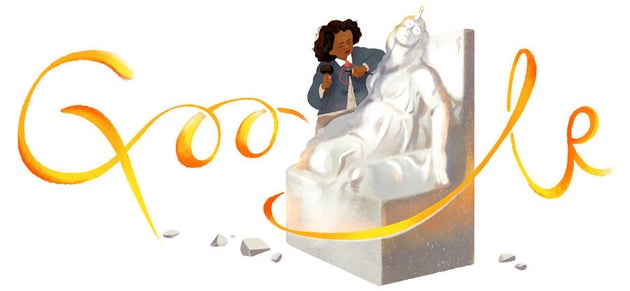Re-Visioning Wildfire: Historical Interpretations of the Life and Art of Edmonia Lewis
Southeastern Oklahoma University
Native American Symposium
2005-Proceedings of the Sixth Native American Symposium
pages 31-39
Julieanna Frost
Concordia University
As a feminist historian, one of my major goals is to reclaim the histories of women and to broadcast the diversity of the female experience. In many ways creating a multicultural curriculum is a form of political activism for me. Regarding inclusive history, I strongly agree with Gloria Joseph, who stated that learning history “will help to shatter the prevailing mythology that inhibits so many from acting more decisively for social change and to create a more just society and viable future for all.” My first brief introduction to Edmonia Lewis came in the article “Object Into Subject: Some Thoughts on the Work of Black Women Artists” by Michelle Cliff, which was included in the anthology Making Face, Making Soul: Creative and Critical Perspectives by Feminists of Color. This piece created a desire for me to learn more about the life and work of Wildfire Mary Edmonia Lewis (ca. 1843 – ca. 1911).
In art encyclopedias and critiques, Lewis is often noted as the first African American female sculptor. To be more accurate, her father was African American and her mother was Anishinabe. Orphaned as a child, she was raised among her mother’s people. The majority of her work was accomplished between 1866 and 1876. Her art has primarily been read as a representation of her Black heritage, ignoring her strong connection to her Native American heritage. In an attempt to rectify this oversight, this paper will examine how her Anishinabe ancestry influenced Lewis’s life and artwork, and explain why scholars tend to ignore this ancestry.
Much of Lewis’s early life and later life went unrecorded. It is believed that she was born near Albany, New York around 1843 and named Wildfire. Her father was a free Black and her mother was Anishinabe. Lewis also had a brother, Sunrise. It appears that Lewis spent most of her early years with the Anishinabe. In an interview, Lewis related,
Mother was a wild Indian and was born in Albany, of copper color and with straight black hair. There she made and sold moccasins. My father, who was a Negro, and a gentleman’s servant, saw her and married her … Mother often left home and wandered with her people, whose habits she could not forget, and thus we were brought up in the same wild manner. Until I was twelve years old, I led this wandering life, fishing and swimming … and making moccasins.
In 1849, Lewis’s mother died and her maternal aunts took her in and raised her. Lewis recalled, “when my mother was dying, she wanted me to promise that I would live three years with her people, and I did.”…
…One reason Lewis is viewed as an African American artist is based upon the social construction of race, as it existed during her lifetime. Dating back to the 17th century, laws that affected Africans and a small number of Native Americans were passed in the English colonies that made slavery an inheritable condition that passed from mother to child. To make the institutionalization of slavery complete, most English colonies outlawed intermarriage between whites and “colored” people by the 18th century. In addition, the legal system did not recognize marriages between “colored” people, although such common law arrangements existed from the colonial period when Blacks and Indians were utilized as indentured servants and later as slaves for life. Nash noted that, “institutions created by white Americans have disguised the degree of red-black intermixing by defining the children of mixed red-black ancestry as black and using the term mulatto in many cases to define half-African, half-Indian persons.” This typology served the economic interests of the ruling class, since classifying these people as Black typically bestowed slave status upon them. Additionally, this classification decreased the population of Native American nations because whites did not acknowledge Black Indians as belonging to the tribe. In contrast to the white practice of racial classification, most of the Native American nations granted full tribal membership to mixed race people if the mother was a member of the tribe. At the time of her birth the Anishinabe also accepted mixed-bloods into the tribe. Although Lewis had an Anishinabe mother and lived among this nation during her formative years, white society classified her as black…
Read the entire paper here.



